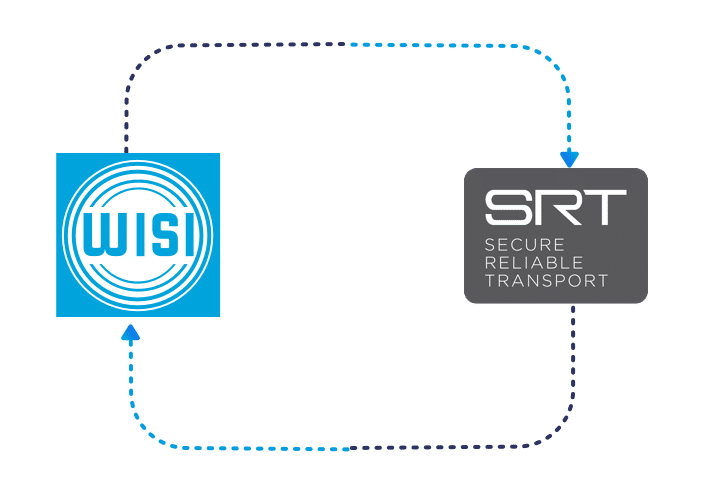
WISI, a member of the SRT Alliance, has implemented support for the SRT protocol in the WISI Intelligent Headend Product family – Inca, Tangram or Chameleon.
Video operators can now use SRT in WISI products to lower latency and increase reliability.
In this application page, you will learn:
- What is SRT?
- How does it work?
- Why use SRT?
- Why launch SRT with WISI?
What is SRT?
SRT (Secure Reliable Transport) is a video transport protocol used to deliver high-quality, low-latency video across unpredictable networks.
- Secure – Protects video streams using industry-standard encryption AES 128/256
- Reliable – Recovers from severe packet loss
- Transport – Dynamically adapts to changing network conditions
SRT optimizes streaming performance across noisy or unpredictable networks while addressing security concerns and focusing on high-performance video.
SRT is designed to protect against jitter, packet loss, and bandwidth fluctuations to help ensure the best viewing experience. This new transport protocol uses advanced low latency retransmission techniques to protect streams against packet loss. As video and audio packets are streamed between two endpoints, SRT detects and adapts to the real-time network conditions between the source and destination devices. SRT also supports end-to-end AES encryption to ensure streams are protected from contribution to distribution.
In summary, SRT offers high-quality streaming and guaranteed security for all point-to-point video delivery workflows.
How it Works
ARQ
SRT uses a retransmission technology known as Adaptive Repeat reQuest (ARQ). ARQ is the optimal method to handle the most common errors when transmitting video and audio data over the internet, such as random bursts of lost packets.
ARQ works by first establishing a two-way connection between the source and destination points. Each data packet is given a unique sequence number. The receiver uses this sequence to determine if all packets have been received correctly and in the right order. If packets are missing or contain errors, the receiver creates a list of these sequence numbers and automatically requests the sender to retransmit.
Simplified Firewall Traversal
SRT uses encrypted streams and ensures easy firewall traversal by using a caller/listener handshake concept. The handshaking process used by SRT respects and maintains existing corporate security policies by allowing outbound connections without requiring dangerous, permanent exterior ports to be opened in a firewall.
Chameleon, Tangram and Inca support all SRT transmission modes: caller, listener, or rendezvous.

Benefits:
- Send streams securely and reliably over the internet to remote headend sites or hospitality networks
- Replace RTP+FEC and improve overhead bandwidth usage
- Replace expensive satellite distribution deployments to reduce costs
- Leverage the internet and deliver high-quality video securely to different cities, countries and even continents

Why use SRT?
FEC can be wasteful
Forward Error Correction (FEC) appends extra data to a transmitted signal which a receiver can use to recover corrupted or missing data. For this this technique to work, extra bandwidth for the FEC data is required. Also, FEC packets are sent whether they are needed or not. This means that if the data connection is working well, the additional bandwidth used for the FEC packets is wasted.
Non-proprietary
There are other solutions out there that can be used to deliver high-bandwidth, low-latency video streams over unmanaged networks. Most of these are proprietary solutions that can be very expensive and are only implemented in a handful of products.
Being open-source, SRT is available to all video processing developers and has been integrated into multiple platforms on the market. With the reliance on the same underlying code base, interoperability between distribution and contribution devices is simplified.
Why Choose WISI for Your SRT project?
- Option to transcode between MPEG-2, MPEG-4 and HEVC at contribution or distribution endpoint
- Encryption and decryption options using Verimatrix, BISS, Pro:Idiom or Samsung LYNK
- Receive SRT streams and output as IP, QAM, Analog, ASI or SDI
- Small footprint with power-efficient, modular solutions in 1RU
- Powerful management and monitoring tools
- Rapid configuration and deployment with an intuitive, web-based UI
- Reliable 24/7 operation thanks to quality engineering and strong North American technical support
